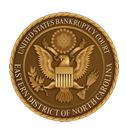Adversary Proceedings Primer
Certain actions in bankruptcy court require the filing of an adversary proceeding. Although called by a different name, an adversary proceeding is in reality just a civil lawsuit in bankruptcy court. The procedures governing adversary proceedings can be found in Part VII of the Federal Rules of Bankruptcy Procedure, the Federal Rules of Civil Procedure (as incorporated by the Federal Rules of Bankruptcy Procedure), and the Local Rules for the Bankruptcy Court of the Eastern District.
An adversary proceeding is commenced by the filing of a complaint. After filing of the complaint and issuance of a summons by the clerk of court, the summons and complaint must be served upon the named defendants. If service is not accomplished, the action may be dismissed for failure to prosecute. Assuming service is timely accomplished, the defendant must respond to the complaint within 30 days of the issuance of the summons. If a response is not filed with the clerk of court within 30 days, the plaintiff may move for entry of default and for a default judgment.
After the filing and service of all pleadings, the court will set a preliminary pretrial conference. All parties will receive a notice of the hearing location, date, and time from the clerk. At this conference, the parties discuss various aspects of the adversary proceeding with the judge assigned to the case. PLEASE NOTE THAT THIS IS NOT A TRIAL ON THE MERITS OF THE CASE. This discussion will cover, among other things,:
- the issues raised by the pleadings;
- pending and/or additional motions;
- discovery issues;
- any settlement discussions between the parties;
- the possibility of arbitration or mediation; and
- the need for additional pretrial conferences.
Once the preliminary pretrial conference has been held, the court will enter a scheduling order. This order sets expected deadlines for the completion of discovery, filing of motions, final pretrial conference, and trial of the proceeding.
Prior to and after the preliminary pretrial conference, but prior to the deadline set in the scheduling order, the parties are free to conduct discovery. Discovery consists of depositions, interrogatories, production of documents, and other means of collecting information from the opposing party regarding the case, as set forth in the Rules mentioned above.
Various motions may be heard by the court prior to the trial of the proceeding. These motions include motions to dismiss part or all of the pending actions, motions regarding discovery, and motions for summary judgment. A motion for summary judgment involves presentation of the facts contained in the pleadings, along with evidence and affidavits, for the court’s consideration prior to trial. A motion for summary judgment will only be allowed if there are no issues of material fact between the parties, but rather only issues of law.
Assuming that the parties are unable to reach a settlement of the proceeding through their own negotiations, or through the formal process of arbitration or mediation, and assuming that no ruling on a motion has resolved all issues in the proceeding, the parties will participate in a final pretrial conference. AGAIN, PLEASE NOTE THAT THIS IS NOT A TRIAL ON THE MERITS OF THE CASE. Prior to the conference, the parties should enter into a pretrial order, which includes a list of the parties’ stipulations, contentions, exhibits, pleadings and discovery materials to be submitted to the court, and witnesses.
If the proceeding goes to trial, the court will follow the following procedures:
- Opening statements – each party will be allowed to make an opening statement to the court. This statement should be used to summarize for the court the claim of the party and to preview for the court the evidence the party will present during the trial. Please note that this is not the appropriate time to make arguments or to present evidence. It is merely an opportunity to let the judge know what to expect from the party during the course of the trial.
- Evidence – each party will be given an opportunity to present evidence to support his/her position. The evidence may take the form of witnesses and/or exhibits. Each party also will be given the opportunity to question witnesses for the opposing party and to object to the admissibility of exhibits offered by the opposing party.
- Closing argument – each party will be allowed a specific period of time during which to make his/her closing argument. This is the party’s opportunity to argue to the court why he/she should be the successful party in the proceeding based upon the evidence presented during the trial and based upon the law.
After the trial, the judge may render a ruling from the bench regarding the proceeding. If the judge does render his/her decision from the bench, this ruling will be followed by a formal written opinion setting forth the basis for the judge’s ruling and a judgment. The judge may choose to take the proceeding under advisement, in which instance an opinion and judgment should be entered within 60 days of the trial.
